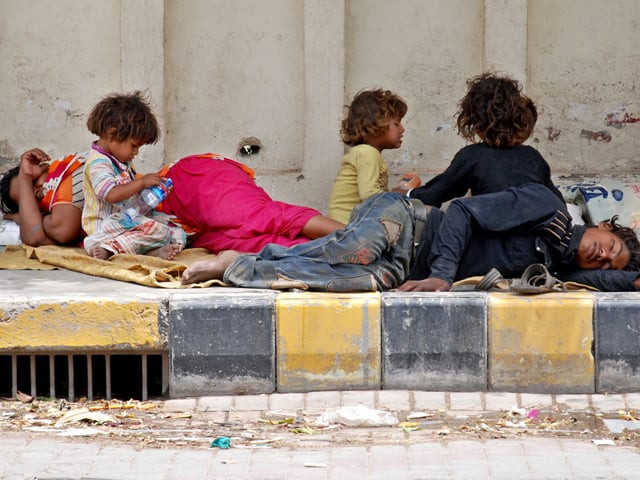Itchy and scratchy: 19,497 Peshawarites diagnosed with skin infections in 2013
Poor hygiene, pollution, overcrowding cited as main causes by specialist.

Poor hygiene, pollution, overcrowding cited as main causes by specialist. PHOTO: EXPRESS/SHAHBAZ MALIK
Skin infections were prevalent in Peshawar in 2013 as nearly 19,497 patients reported skin problems – the highest number in Khyber-Pakhtunkhwa (K-P) – according to a health department report. The report carried data from January till December 2013.
Over 140,000 people across K-P suffered different types of skin diseases caused by a number of reasons, including poor hygiene, pollution, overcrowding due to influx of Afghan refugees and internally displaced persons (IDPs), and lack of awareness about diseases.
The reports states in the past year 19,497 patients were recorded in Peshawar, 13,546 in Mardan, 5,823 in Nowshera, 8,466 in Swabi, 10,669 in Charsadda, 3,133 in Shangla, 4,585 in Upper Dir, 9,946 in Swat, 4,845 in Malakand, 3,518 in Lower Dir, 3,785 in Chitral, 3,779 in Buner, 658 in Hangu, 2,960 in Kohat, 3,983 in Karak, 3,660 in Battagram, 7,942 in Mansehra, 1,109 in Kohistan, 7,852 in Haripur, 3,912 in Abbottabad, 941 in Tank, 1,991 in Lakki Marwat, 6,043 in DI Khan and 7,422 in Bannu.
Professor Dr Muhammad Zubair, a skin specialist at Lady Reading Hospital, told The Express Tribune on Sunday that overcrowded IDP camps and air pollution are major causes for the surge in skin diseases in the province.
“As compared to other areas of K-P, the incidence of skin diseases is particularly higher in bigger cities like Peshawar, Mardan, Nowshera and Charsadda as well as the tribal areas,” said Dr Zubair.
He explained people who have oily or dry skin are more prone to skin problems than people who have normal skin. “Severity of weather also increases the risk of skin diseases among people,” he added.
According to the doctor, scabies, eczema, heat rashes and skin conditions that cause hair loss are common ailments afflicting the people of K-P and tribal areas.
Cases of cutaneous leishmaniasis – thought to have originated from Afghan refugees residing in the Federally Administered Tribal Areas and K-P – have been on the rise, shared Dr Zubair.
No scratching
To avoid getting a skin infection or disease, the doctor stressed on the need for maintaining cleanliness and consuming hygienically prepared food.
He suggested if a person is infected they should limit their contact with other people and not share towels or clothes while the infection lasts. “Skin diseases can be highly contagious and can be passed on to others,” warned the doctor.
“Many doctors believe the use of substandard fairness creams, henna and various products at beauty salons can also lead to such infections and diseases,” explained Dr Zubair.
The skin specialist maintained awareness about skin conditions and their spread should be created and the government should establish district-wise centres to control their spread. This step will help provide affordable treatment. At the moment, medicines used for providing relief for skin afflictions can cost between Rs1,000 to Rs2,000.
Published in The Express Tribune, January 20th, 2014.













COMMENTS
Comments are moderated and generally will be posted if they are on-topic and not abusive.
For more information, please see our Comments FAQ